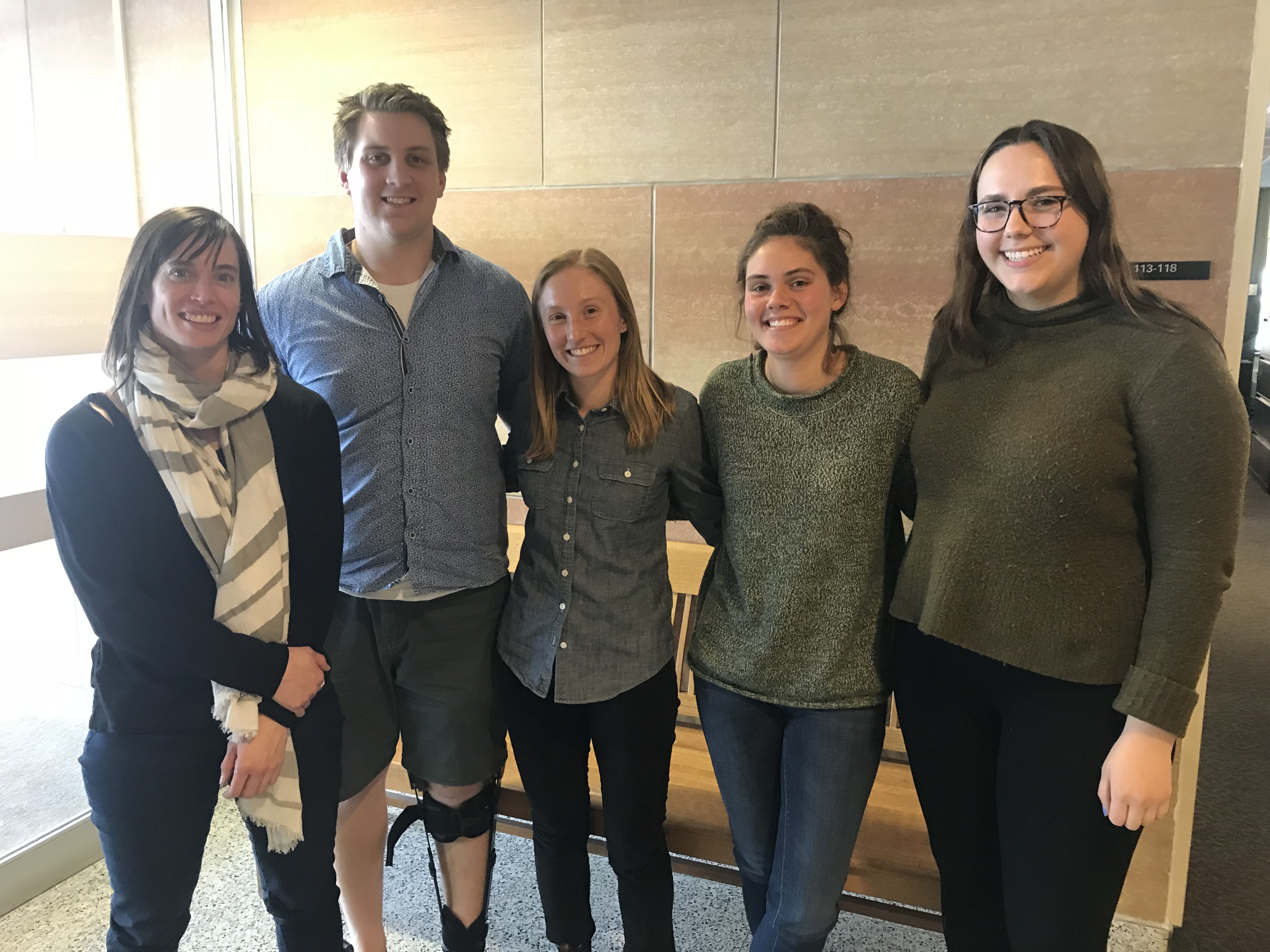Simulation Study
Dr. Katie St. Clair, Associate Professor at Carleton College advised four undergraduate mathematics and statistics students on a senior comprehensive project that explored the efficiency of different distance sampling survey designs using simulations. Computer simulations were conducted using the R package DSsim (Marshall 2017).
Students

From left to right: Dr. Katie St. Clair, Nick Fredrickson, Emily Kaegi, Alana Danieu, and Clara Livingston
Results
The students presented their work to the MAISRC zebra mussel monitoring team on April 3, 2018. You can find their presentation slides here. In addition, you can view their final final report here. Some of their main findings were:
Estimates were unbiased (or nearly so), provided that the number of zebra mussels detected during the survey, n, was large (a general guideline is that n≥60−80 Buckland et al. 2015)
In low density lakes, precision can be improved by sampling more transects or by increasing detection probabilities.
Density estimate standard errors were consistently underestimated in all simulation scenarios, which suggests that distance sampling estimates are less precise than what is reported by distance sampling software.
There was a slight benefit to using a stratified sampling design with more effort allocated to an area known to be a “hotspot” (e.g., a clustering of mussels in an infestation zone). There was a risk to this approach, however, in that estimates were often really poor when this area was mis-identified.
There is a tradeoff between detection probabilities and the amount of time spent on a transect. The students explored this tradeoff by collecting distance sampling data using an experimental design where students volunteers looked for marshmallows nestled in pillow batting and cotton balls. Volunteers were assigned to one of two treatments (a “fast” and “slow” sampling plan). Students that sampled more slowly detected more marshmallows, though the relationship between time and detection probabilities was non-linear and plateaued after a certain point in time. This suggests there may be an optimal sampling rate that allows surveyors to have high detection probabilities while also surveying a relatively large area.
Literature cited
Buckland, S.T., E.A. Rexstad, T.A. Marques, and C.S. Oedekoven. 2015. Distance Sampling: Methods and Applications. Switzerland. Springer International Publishing.
Marshall, L. 2017. DSsim: Distance Sampling Simulations. R package version 1.1.2. https://cran.r-project.org/package=DSsim